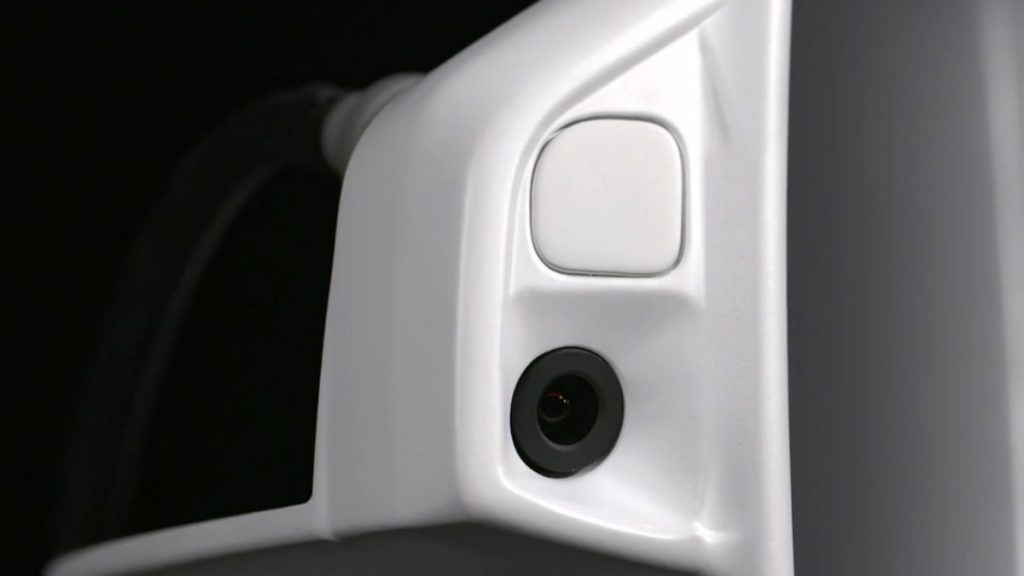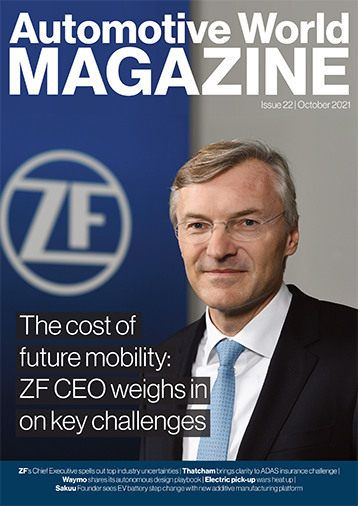Like any other car on the road, an autonomous vehicle (AV) should be kept clean. The issue relates less to aesthetics, and more to safety: blocked sensors could render active safety systems useless, and in a worst-case scenario may even result in a crash.
Today, the effects of a soiled sensor are already becoming apparent. Advanced driver assistance systems (ADAS) rely on vision sensors which scan the road and identify possible threats. The idea is that these systems will engage faster than a driver can react, mitigating or preventing a collision. But if the sensor cannot see, it is useless. Today’s cameras can be easily disrupted by everything from snow, rain, dust and even insects. LiDAR, radar and infrared can even be affected by residual moisture.
For this reason, the industry is recognising a need for comprehensive cleaning systems that can keep vehicles operational in any condition in any market around the world. With the automotive industry more globalised than ever, the same vehicle sold in the heat and dust of South Africa may also need to drive in the depths of a freezing Michigan winter. Suppliers with a global presence and full systems capability could soon be in high demand as automation increases.
Make a complex system simple
Global supplier Kautex Textron specialises in clear vision systems (CVS) and has been closely monitoring developments around ADAS and autonomous driving. Its CVS unit has gradually bulked out since 2014 to a point where it now provides a full suite of components and systems under the Allegro brand. With a background in other headlamp and windscreen cleaning systems, the company has been able to use scalable parts to avoid costly bespoke solutions.
The Allegro system is designed for ADAS, covering everything from Level 1 systems through to Level 3+. “It is an expandable system that can meet all of today’s needs,” explains David Plant, Vice President of the CVS Business Unit at Kautex Textron. “With drivers expecting these systems to work all the time, the risk of dissatisfaction will drive efforts to ensure these functions work in all conditions.”

Kautex’s solution is based on a mixture of telescopic and static nozzles, hoses, storage tanks and pumps, which essentially use air and fluid to clean different sensors. This portfolio of components can be mixed and matched to fit virtually every customer application. “As customer requirements and regulations around autonomous driving continue evolving, a system that is adaptable across different applications will be crucial,” Plant adds.
On the face of it, a sensor cleaning system may sound fairly simple, but with a growing number of sensors on board that are mounted on different areas of the vehicle, a comprehensive CVS can be quite extensive. Some customers might have ten cleaning points, while other more advanced models might have double that. One AV application Kautex is working on currently sports 28 different cleaning points. All this brings added complexity to the build, as well as added weight and cost. “The distribution system needs to be lightweight and offer quick connector capability,” said Plant. “The system must be practical to install when it’s going down that assembly line.”
Automakers will also want to avoid any bumps or protruding nozzles on the exterior of the vehicle for aesthetic reasons. “We want the sensor cleaning system to be invisible,” says Plant. “Customers do not want to hear noise from the pumps, they do not want to see the system and they ultimately want it to be as seamless as possible, particularly with a premium vehicle. We have a very high bar to meet.”
Smart software
The next phase of its system—Allegro Premium—brings intelligence into the mix and can adapt its cleaning strategy based on the conditions at hand. “We can really tailor the function of that system for the environment the vehicle is working in,” explained Plant. “Cleaning needs can vary, so if it’s a bit of dust or mist, we may just give a puff of air to the camera to clean it without water. It is about making sure we have an optimised system.”
We participate in all applications across passenger cars, robotaxis and in the commercial truck area
From a dedicated testing facility, Kautex can simulate a variety of different weather and road conditions to see how different solutions perform. This can inform how a system reacts to certain events. “It really depends on the sensor type and the environmental condition. With LiDAR, rain or even just a fine mist affects the way light rays interact with the main LiDAR unit,” explained Plant. “With a camera, anything that might limit its sight must be removed. This could be anything from road salt and snow to insect impacts. In these types of situations, cleaning is absolutely essential.”
In-house tests have shown that over time cleaning systems can become less effective as the surface of the sensor wears. Allegro Premium allows the cleaning system to adapt, ensuring that sensors continue to do what is needed over the vehicle’s lifetime. It can also decide which method of cleaning is required, which prevents overuse of cleaning products. “We do not want to clean something unnecessarily,” Plant explained. “That’s where the smart software control really comes into play.”
A growing market
Kautex has good experience in the AV sector, having been the supplier of choice for the Uber-Volvo collaboration’s Drive Me programme, one of the early public AV experiments which put prototype vehicles on Swedish roads.

Moving forward, Kautex is set to expand its customer base from not only the industry’s incumbent automakers but also new future mobility entrants. “Our Allegro system really allows us to participate in all applications across passenger cars, robotaxis and in the commercial truck area,” Plant advised. And although details remain confidential at this stage, he added that Kautex is also the sensor cleaning supplier for “one of the world’s first truly purpose-built robotaxis” being built by “a leading Californian company.”
With locations around the globe, Plant believes that Kautex is well prepared to meet the needs of the industry moving forward, and particularly as localisation requirements heighten. In North America, for example, the reconfigured NAFTA agreement—USMCA—will require a growing percentage of components to come from the US, Canada or Mexico. “This means that if you’re making parts in North America, you now need to use more local content or your customer may get a penalty,” said Plant.
“Looking ahead, we’re going to see more and more pressure on the supply base to offer local sourcing,” he concluded. “Our full-system strategy and global footprint will be a big benefit for our customers, particularly as the industry’s awareness around the need for clean sensors builds.”




